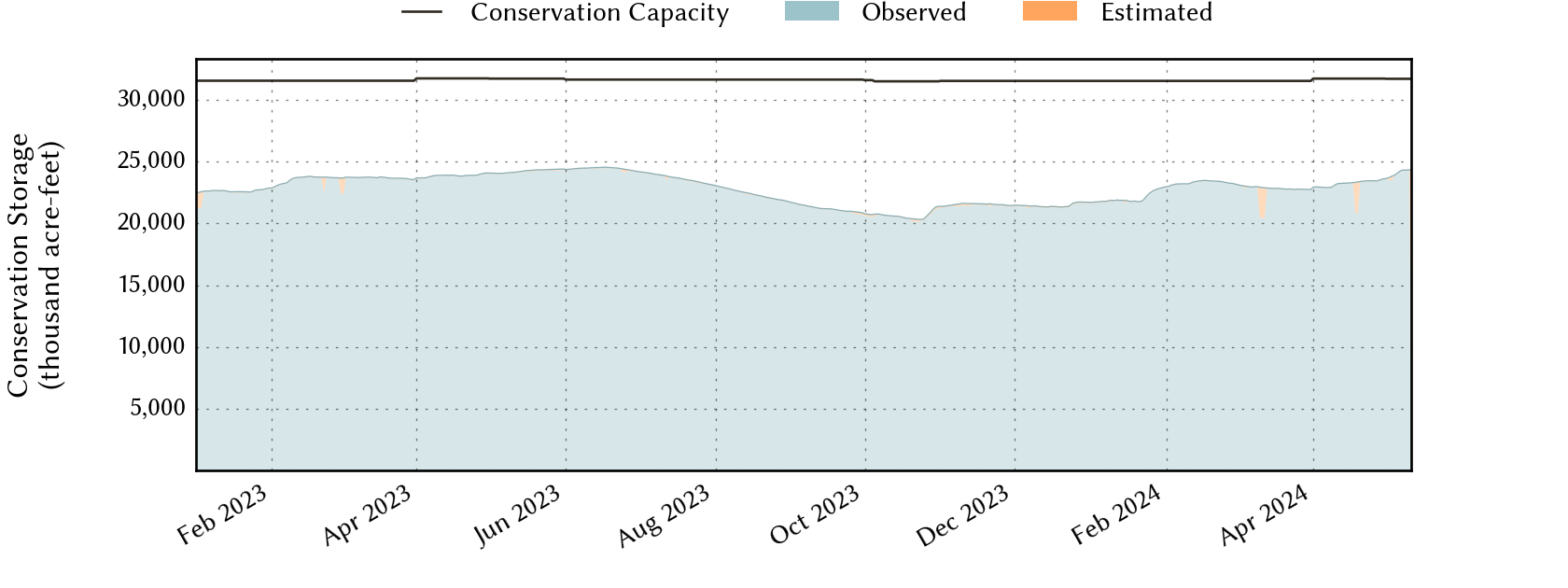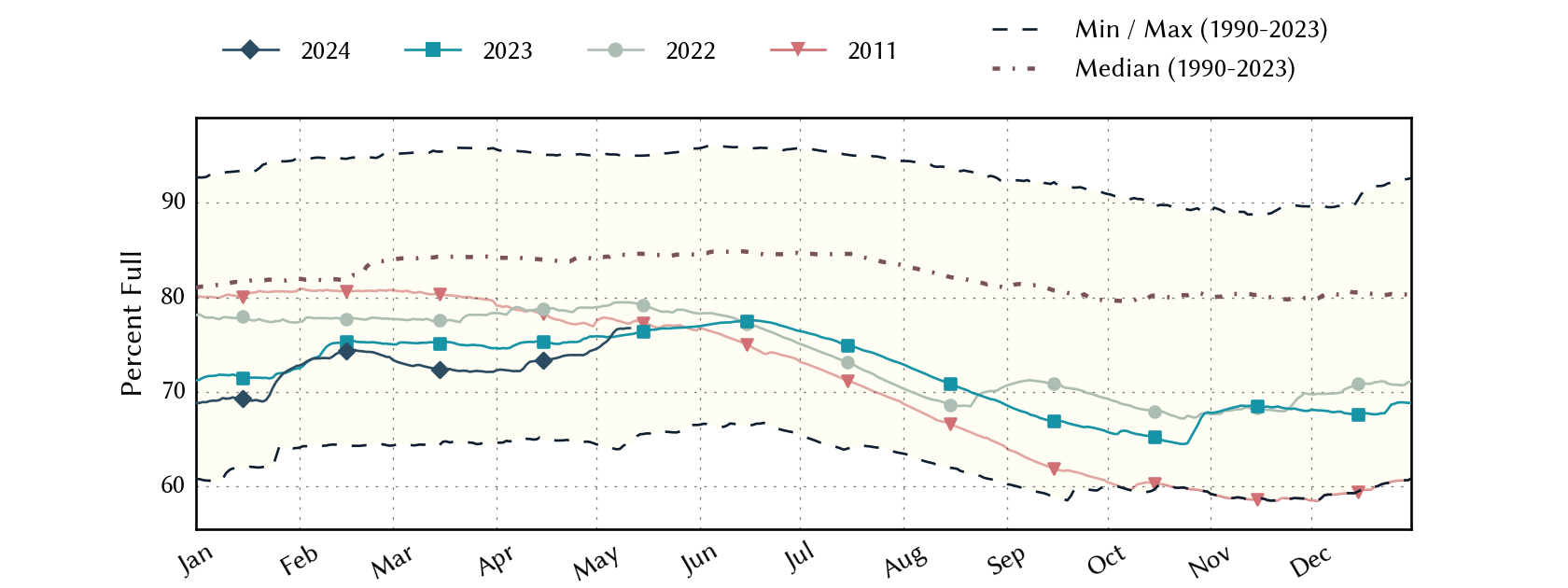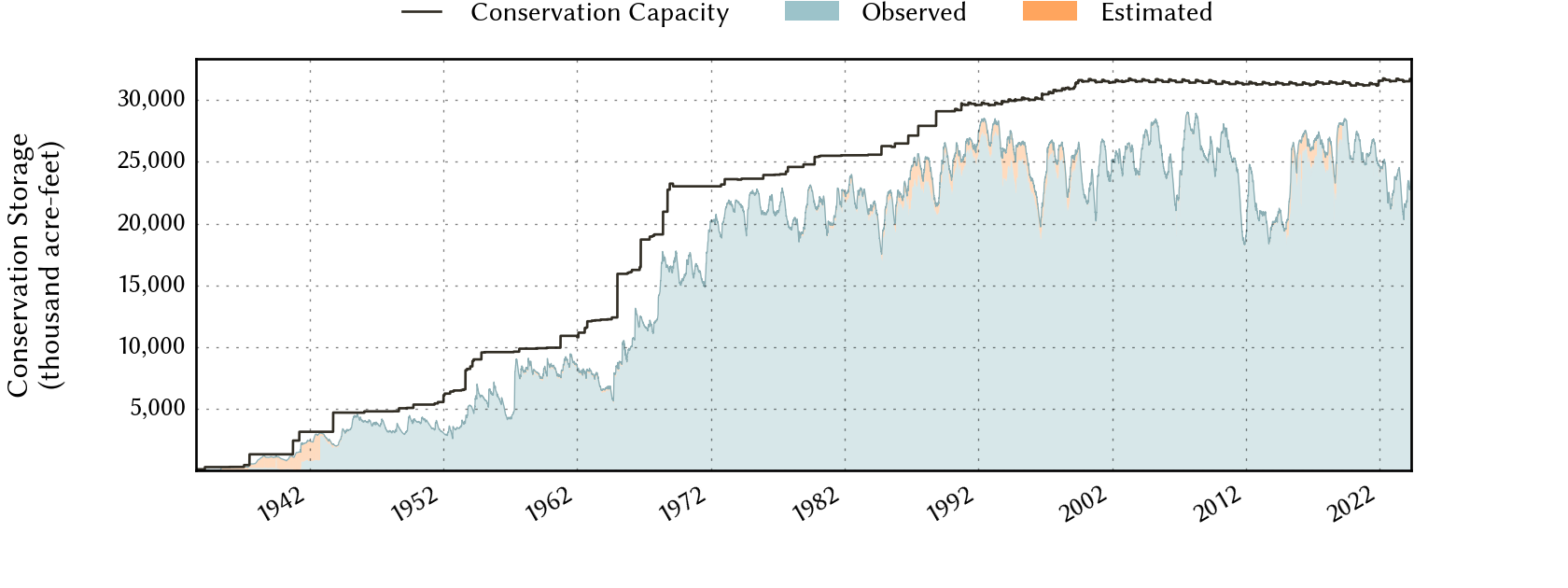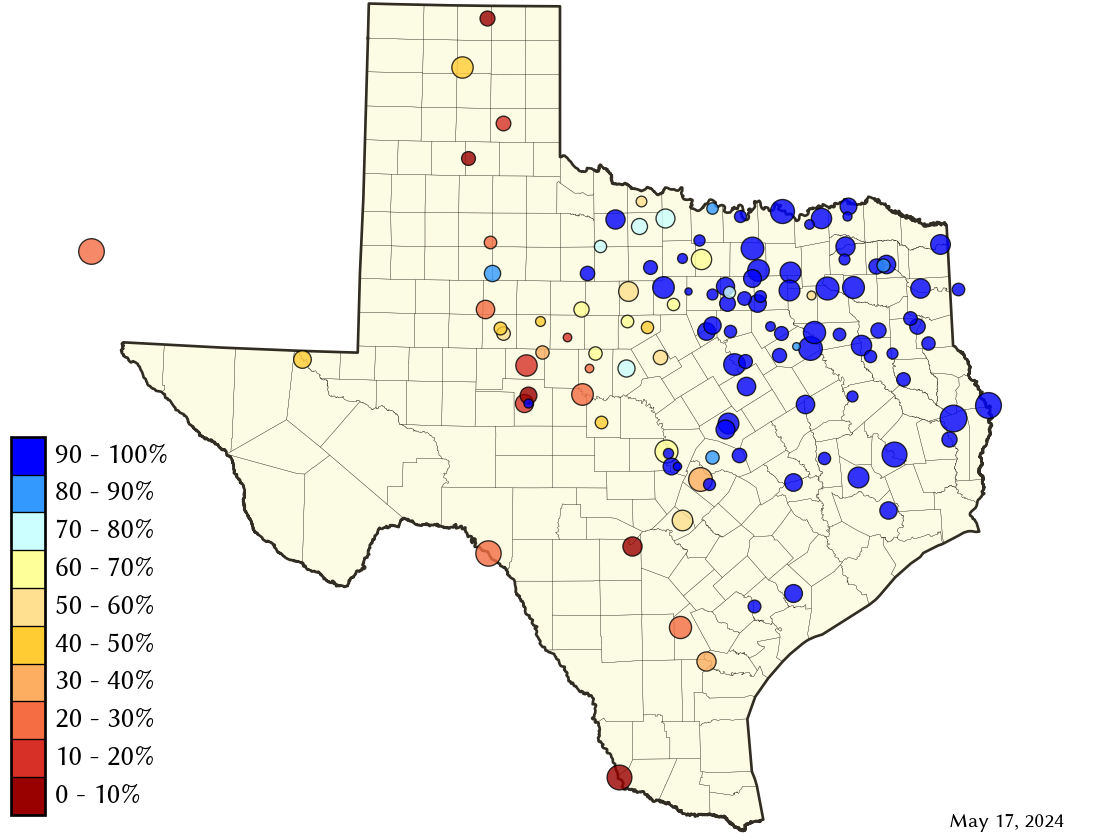Did anyone see Ken Burns's "The Dust Bowl"? It shows how devastating droughts are. They are much worse than hurricanes and floods combined. I would shudder to see the damage figure from the 1930s drought or let alone 1950s drought. More people were displaced by the 1930s drought than Hurricane Katrina.
Ken Burns's "The Dust Bowl"
http://www.pbs.org/kenburns/dustbowl/
Did anyone see Ken Burns's "The Dust Bowl"
- Ptarmigan
- Statistical Specialist

- Posts: 4418
- Joined: Wed Feb 03, 2010 7:20 pm
- Contact:
- tireman4
- Global Moderator

- Posts: 6694
- Joined: Wed Feb 03, 2010 9:24 pm
- Location: Humble, Texas
- Contact:
I should. My dissertation research (if anyone is asking..lol, .The Federal Writers' Project) is in that era.
-
unome
- Posts: 3062
- Joined: Fri Feb 12, 2010 6:11 pm
it is an excellent documentary. My mother, who is 92, remembers it well, as she was a young girl in that decade. The recent droughts are somewhat comparable, but we enjoy advanced farming & irrigation techniques now. The Ogalla Aquifer will not last forever...
http://www.scientificamerican.com/artic ... la-aquifer (from 2009)
In Brief
If spread across the U.S. the aquifer would cover all 50 states with 1.5 feet of water
If drained, it would take more than 6,000 years to refill naturally
More than 90 percent of the water pumped is used to irrigate crops
$20 billion a year in food and fiber depend on the aquifer
http://www.waterencyclopedia.com/Oc-Po/ ... uifer.html
The Ogallala Aquifer (shaded area) is in a state of overdraft owing to the current rate of water use. If withdrawals continue unabated, the aquifer could be depleted in only a few decades.
http://ogallala.ars.usda.gov/
http://www.hpwd.com/aquifers/ogallala-aquifer
edit to add water data for Texas: http://www.waterdatafortexas.org/reservoirs/statewide
Texas Reservoirs
Monitored Water Supply Reservoirs are 65.59% full on 2012-11-25 *




http://www.scientificamerican.com/artic ... la-aquifer (from 2009)
In Brief
If spread across the U.S. the aquifer would cover all 50 states with 1.5 feet of water
If drained, it would take more than 6,000 years to refill naturally
More than 90 percent of the water pumped is used to irrigate crops
$20 billion a year in food and fiber depend on the aquifer
http://www.waterencyclopedia.com/Oc-Po/ ... uifer.html
The Ogallala Aquifer (shaded area) is in a state of overdraft owing to the current rate of water use. If withdrawals continue unabated, the aquifer could be depleted in only a few decades.
http://ogallala.ars.usda.gov/
http://www.hpwd.com/aquifers/ogallala-aquifer
edit to add water data for Texas: http://www.waterdatafortexas.org/reservoirs/statewide
Texas Reservoirs
Monitored Water Supply Reservoirs are 65.59% full on 2012-11-25 *




-
brad000123
- Posts: 1
- Joined: Mon Nov 26, 2012 12:09 am
CHECK LOCAL LISTINGS
THE DUST BOWL chronicles the worst man-made ecological disaster in American history, in which the frenzied wheat boom of the "Great Plow-Up," followed by a decade-long drought during the 1930s nearly swept away the breadbasket of the nation. Vivid interviews with twenty-six survivors of those hard times, combined with dramatic photographs and seldom seen movie footage, bring to life stories of incredible human suffering and equally incredible human perseverance. It is also a morality tale about our relationship to the land that sustains us—a lesson we ignore at our peril.
THE DUST BOWL chronicles the worst man-made ecological disaster in American history, in which the frenzied wheat boom of the "Great Plow-Up," followed by a decade-long drought during the 1930s nearly swept away the breadbasket of the nation. Vivid interviews with twenty-six survivors of those hard times, combined with dramatic photographs and seldom seen movie footage, bring to life stories of incredible human suffering and equally incredible human perseverance. It is also a morality tale about our relationship to the land that sustains us—a lesson we ignore at our peril.
Brad
- Ptarmigan
- Statistical Specialist

- Posts: 4418
- Joined: Wed Feb 03, 2010 7:20 pm
- Contact:
Current drought pales in comparison with 1950s 'drought of record'
http://www.statesman.com/news/news/loca ... d-1/nRdC5/
The 1950s drought today would do $22 billion in losses, which is comparable to Hurricane Ike. Think about the total damage figure. I cannot even imagine the damage and loss figure for the 1930s Dust Bowl. I could imagine it would eclipse Hurricane Katrina a great deal. Perhaps in today's value, close at least $500 billion. The Dust Bowl displaced way more people than Katrina did.
http://www.statesman.com/news/news/loca ... d-1/nRdC5/
The 1950s drought today would do $22 billion in losses, which is comparable to Hurricane Ike. Think about the total damage figure. I cannot even imagine the damage and loss figure for the 1930s Dust Bowl. I could imagine it would eclipse Hurricane Katrina a great deal. Perhaps in today's value, close at least $500 billion. The Dust Bowl displaced way more people than Katrina did.
-
unome
- Posts: 3062
- Joined: Fri Feb 12, 2010 6:11 pm
from NDMC News http://drought.unl.edu/NewsOutreach/NDMCNews.aspx?id=62
Drought of 2012 shows net expansion after receding for two months
Nov 21, 2012
U.S. Drought Monitor, Nov. 20, 2012
Drought expanded and intensified in the week that ended Nov. 20, according to the U.S. Drought Monitor map. Until this week, the Drought of 2012 had been steadily if incrementally receding since its peak on Sept. 25.
Statistics released with the U.S. Drought Monitor map showed increases in all categories of drought. The map showed 50.30 percent of the country in moderate drought or worse, compared with 49.24 percent the week before; 31.67 percent in severe drought or worse, compared with 30.10 percent a week earlier; 15.93 percent in extreme drought or worse, compared with 15.31 percent the week before; and 5.23 percent in exceptional drought, up from 5.02 percent the preceding week.
from http://www1.ncdc.noaa.gov/pub/data/cmb/ ... ry-mod.txt (easier to read at the link)
U.S. % AREA MODERATELY TO EXTREMELY DRY & MODERATELY TO EXTREMELY WET
YR MO DRY WET
here's 2012 ytd
2012 1 27.5 24.0
2012 2 29.9 17.1
2012 3 34.2 6.6
2012 4 39.3 6.8
2012 5 45.8 4.2
2012 6 57.3 7.0
2012 7 58.3 6.1
2012 8 55.4 6.1
2012 9 51.9 5.4
2012 10 49.2 8.1
worst yr in the '50s
1954 1 43.2 6.2
1954 2 53.9 3.6
1954 3 46.4 3.2
1954 4 55.9 4.3
1954 5 46.3 5.0
1954 6 57.9 10.7
1954 7 60.4 7.4
1954 8 56.4 13.0
1954 9 56.7 12.7
1954 10 51.5 11.1
1954 11 57.2 6.7
1954 12 59.5 5.9
worst yr in the '30s
1934 1 50.0 3.7
1934 2 52.0 0.7
1934 3 55.5 2.1
1934 4 63.6 0.6
1934 5 73.1 0.9
1934 6 74.1 1.2
1934 7 79.9 1.4
1934 8 77.5 1.0
1934 9 70.2 1.2
1934 10 67.7 0.8
1934 11 58.8 2.5
1934 12 57.4 1.9
from http://www.ncdc.noaa.gov/sotc/drought/
National Drought Overview
On a broad scale, the 1980s and 1990s were characterized by unusual wetness with short periods of extensive droughts, the 1930s and 1950s were characterized by prolonged periods of extensive droughts with little wetness, and the first decade of the 2000s saw extensive drought and extensive wetness (moderate to extreme drought graphic, severe to extreme drought graphic).
According to the weekly U.S. Drought Monitor, about 60.2 percent of the contiguous U.S. (about 50.4 percent of the U.S. including Alaska, Hawaii, and Puerto Rico) was classified as experiencing moderate to exceptional (D1-D4) drought at the end of October.
a question for anyone - since Alaska & Hawaii were admitted to the union in 1959, are %s before that year are based on smaller total land areas than the %s for years after, such as 2012, for example ?
Drought of 2012 shows net expansion after receding for two months
Nov 21, 2012
U.S. Drought Monitor, Nov. 20, 2012
Drought expanded and intensified in the week that ended Nov. 20, according to the U.S. Drought Monitor map. Until this week, the Drought of 2012 had been steadily if incrementally receding since its peak on Sept. 25.
Statistics released with the U.S. Drought Monitor map showed increases in all categories of drought. The map showed 50.30 percent of the country in moderate drought or worse, compared with 49.24 percent the week before; 31.67 percent in severe drought or worse, compared with 30.10 percent a week earlier; 15.93 percent in extreme drought or worse, compared with 15.31 percent the week before; and 5.23 percent in exceptional drought, up from 5.02 percent the preceding week.
from http://www1.ncdc.noaa.gov/pub/data/cmb/ ... ry-mod.txt (easier to read at the link)
U.S. % AREA MODERATELY TO EXTREMELY DRY & MODERATELY TO EXTREMELY WET
YR MO DRY WET
here's 2012 ytd
2012 1 27.5 24.0
2012 2 29.9 17.1
2012 3 34.2 6.6
2012 4 39.3 6.8
2012 5 45.8 4.2
2012 6 57.3 7.0
2012 7 58.3 6.1
2012 8 55.4 6.1
2012 9 51.9 5.4
2012 10 49.2 8.1
worst yr in the '50s
1954 1 43.2 6.2
1954 2 53.9 3.6
1954 3 46.4 3.2
1954 4 55.9 4.3
1954 5 46.3 5.0
1954 6 57.9 10.7
1954 7 60.4 7.4
1954 8 56.4 13.0
1954 9 56.7 12.7
1954 10 51.5 11.1
1954 11 57.2 6.7
1954 12 59.5 5.9
worst yr in the '30s
1934 1 50.0 3.7
1934 2 52.0 0.7
1934 3 55.5 2.1
1934 4 63.6 0.6
1934 5 73.1 0.9
1934 6 74.1 1.2
1934 7 79.9 1.4
1934 8 77.5 1.0
1934 9 70.2 1.2
1934 10 67.7 0.8
1934 11 58.8 2.5
1934 12 57.4 1.9
from http://www.ncdc.noaa.gov/sotc/drought/
National Drought Overview
On a broad scale, the 1980s and 1990s were characterized by unusual wetness with short periods of extensive droughts, the 1930s and 1950s were characterized by prolonged periods of extensive droughts with little wetness, and the first decade of the 2000s saw extensive drought and extensive wetness (moderate to extreme drought graphic, severe to extreme drought graphic).
According to the weekly U.S. Drought Monitor, about 60.2 percent of the contiguous U.S. (about 50.4 percent of the U.S. including Alaska, Hawaii, and Puerto Rico) was classified as experiencing moderate to exceptional (D1-D4) drought at the end of October.
a question for anyone - since Alaska & Hawaii were admitted to the union in 1959, are %s before that year are based on smaller total land areas than the %s for years after, such as 2012, for example ?
- Katdaddy
- Global Moderator

- Posts: 2521
- Joined: Thu Feb 04, 2010 8:18 am
- Location: League City, Tx
- Contact:
Welcome to the KHOU weather forum brad000123. Its an amazing documentary of the Dust Bowl and American history. Some quite moving interviews regarding the deaths of children from dust pneumonia. Growing up I heard and read about the Dust Bowl but I have never seen a documentary with such a magnitude. I bought the second part on iTunes tonight. The first 1.5 hour part was amazing. I highly recommended it for everyone.